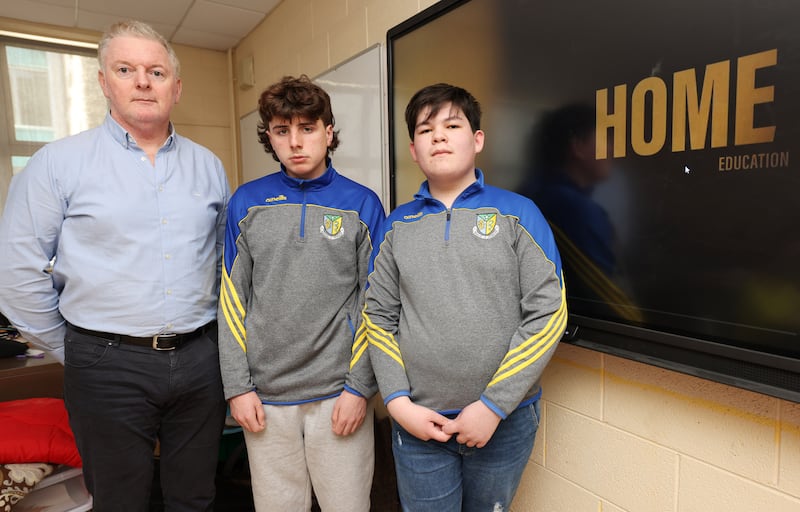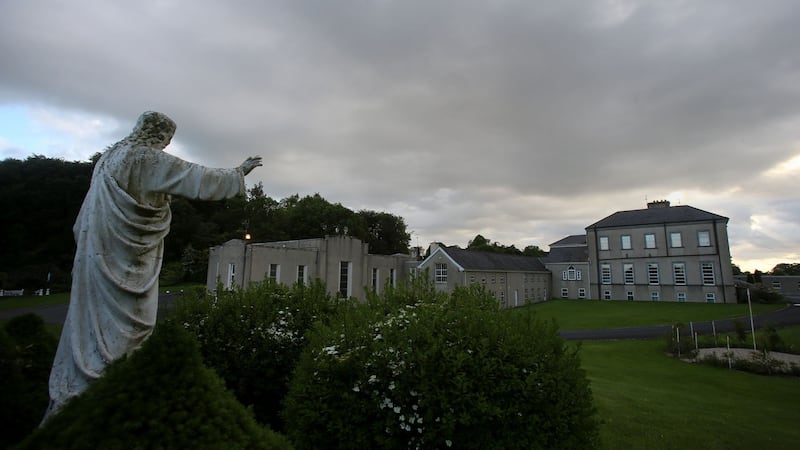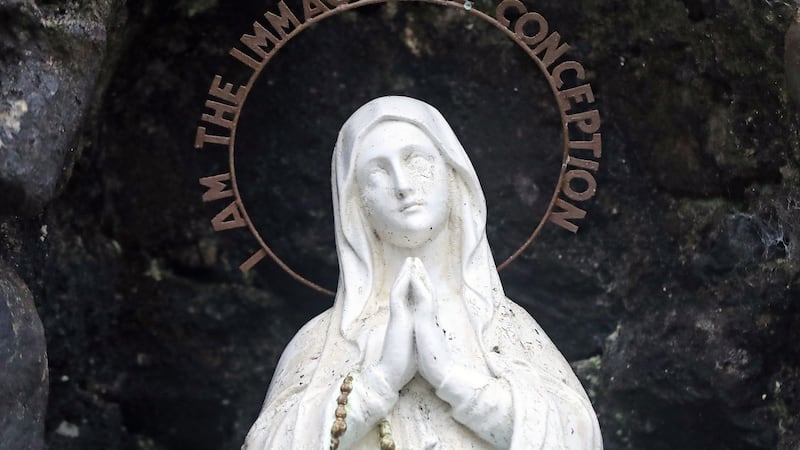Tom Noone, a secondary schoolteacher at Naas CBS, is also a playwright and uses his love of theatre to enrich his students’ learning.
“I have a real grá for educating through drama and performance,” says Noone.
It was this understanding of theatre’s ability to allow students to engage with difficult topics that saw him register his class to participate in a new educational programme developed by the Abbey Theatre.
“Home” addresses one of the darkest aspects of Ireland’s culture of concealment: the legacy of mother and baby homes in Ireland.
READ MORE
Noone says many students are unaware of this aspect of Irish social history.
“[It] isn’t featured on the curriculum. It’s quite relevant, and that some teenagers today might not be aware of it, I thought it would be a good topic to cover.”
The programme is based on work that was curated by actor, writer and adoption rights activist Noelle Brown, in response to a report published in January 2021 by the Commission of Investigation into the Mother and Baby Homes.
The report stated that from 1922 to 1998 some 56,000 mothers and 57,000 children were kept in the 14 mother and baby institutions and four county homes it examined. However, Brown and many of the survivors of these institutions felt their testimonies were not accurately represented.
Home was produced to give the control back to the survivors over how their words were used and to give audiences an opportunity to engage with authentic testimonies.
[ ‘Am I marked by it? Yes’: Joan Burton recalls her life in a mother and baby homeOpens in new window ]
When Brown, who was born in Bessborough mother and baby home, was first approached by Phil Kingston, community and education officer at the Abbey Theatre, about bringing the production to secondary schools, she was surprised to hear it was not included on the curriculum.
“I hadn’t understood that it wasn’t even being taught in schools,” says Brown. “Seventy-six years of history omitted? You might as well leave the Famine out.”
When Brown made inquiries as to why it was not being taught in schools, she says she was told it would be too upsetting. “We’ve learned about the Holocaust, we’ve learned about the Famine,” says Brown. “They are equally upsetting.”

Kingston worked with teachers Michelle Fallon, Johanna Higgins and Roisín Sweeney from Larkin Community College in Dublin to help create resources that would enable teachers to bring the content to their students. They crafted a format that was both respectful to the testimonies and appropriate for students to engage with.
When schools register to participate in the programme, they are sent a teaching pack with suggestions that support engagement with the testimonies.
“It outlines what’s in the film, gives a summary of the extracts, questions for each of the extracts,” says Livingston. “Then, it looks at the idea of bearing witness to how art deals with trauma.”
Teachers are not given lesson plans but are given materials and activities that would support the students as they engage with the topic.
“They imagine what it was like to have been not just a mother, but also a nun, or somebody who lived in a local town,” says Kingston. “That kind of slight oblique fictional lens lets them work with and confront the material in a way that isn’t traumatising.”
Schools are also given access to a shortened version of the Home production.
“We condensed the original film to 35 minutes. There are eight direct testimonies, some delivered by the people who wrote them, and some delivered by actors, and three formal reports,” says Livingston.
“The actors treated the material very well,” adds Noone. “The reason the medium works so well is that it was short enough, it has your attention and also long enough for you to get all the information from each testimony.”
Although the facts around mother and baby homes in Ireland are upsetting, Brown says theatre offers a safe platform for students.
“There is a slight distance from it, but when it becomes a story that is about a person who is literally standing in front of you, giving their lived experience, it’s more powerful than opening a book,” says Brown.
Students in Noone’s class agree that watching and hearing the actual testimonies is a powerful way to learn about this era.
“When you are hearing it from Irish women saying it, you can imagine more accurately what happened than if you were reading it from a book,” says Ruairí Gunning, a student at Naas CBS.
Another student says that listening to the testimonies being read made it easier to understand.
“If you sent them the script of Home, they would read it in a completely different way. But to hear those voices and see those people standing in that light on that stage, I think it’s a much more powerful way of communicating the issues,” says Brown.

The material created for schools also addresses historical and social contexts.
“It looks at the role of the Catholic Church, the creation of the Constitution, the role of women in Ireland at the time,” says Kingston. “So, it gives specific historical, social and political context in which to understand how this came about.”
Another student at Naas CBS says that the learning about the social and historical context are important when it comes to understanding how these institutions were founded.
“Ireland was a very different place at this time, the Catholic Church had a lot to say but it should not be an excuse as to why [mother and baby homes] existed, it should only be used as context,” the student says.
Brown says many students are shocked when they hear about what happened.
“They’re angry as well on behalf of those women and their babies and trying to come to grips with the scale of it, and then realising that the legacy is still there,” says Brown.
Kingston says the materials provided can help students work through this anger.
“We begin a discussion, a more forensic discussion about what is the nature of responsibility. What are we doing now to make sure this doesn’t happen again?” says Kingston.
The need to teach specific vocabulary was another area identified by those involved in creating the resources.
“Why would they know these words? They’re so unused now, thankfully,” says Brown. “When you’re looking at your documentation, and you see the word ‘illegitimate’ and ‘fallen woman’, they are archaic words, but deeply resonant. I was looking at the teacher’s pack for the students and thinking this is interesting, these are words that need to be explained.”
The Abbey has also facilitated in-school workshops and talks when schools have requested them.
“Some schools have asked us to go in and I may go in and do some workshops and maybe invite some of the speakers to come and talk to the young people,” says Kingston.
To date, 65 schools have registered to participate in the programme and Brown says their response to it indicates an appetite for it to be taught in every school.
“I’m delighted with the response,” says Brown. “The teachers wanted to teach it, the students wanted to know. It’s time that it was taught, let us understand what happened, however dark it is.”
Schools can register to access the programme by contacting the Abbey Theatre. HomeEd@abbeytheatre.ie

Mother and baby homes: in numbers
56,000 – number of unmarried mothers who resided in institutions
57,000 – number of children born in mother and baby homes
9,000 – number of children died, about 15 per cent of all those who entered the institutions
14 – number of mother and baby homes in Ireland, as well as several so-called “county homes”
Source: Commission of Investigation into Mother and Baby Homes report on institutions which operated between 1922 and 1998
- Follow The Irish Times education section on Facebook and X (Twitter) and stay up to date


















